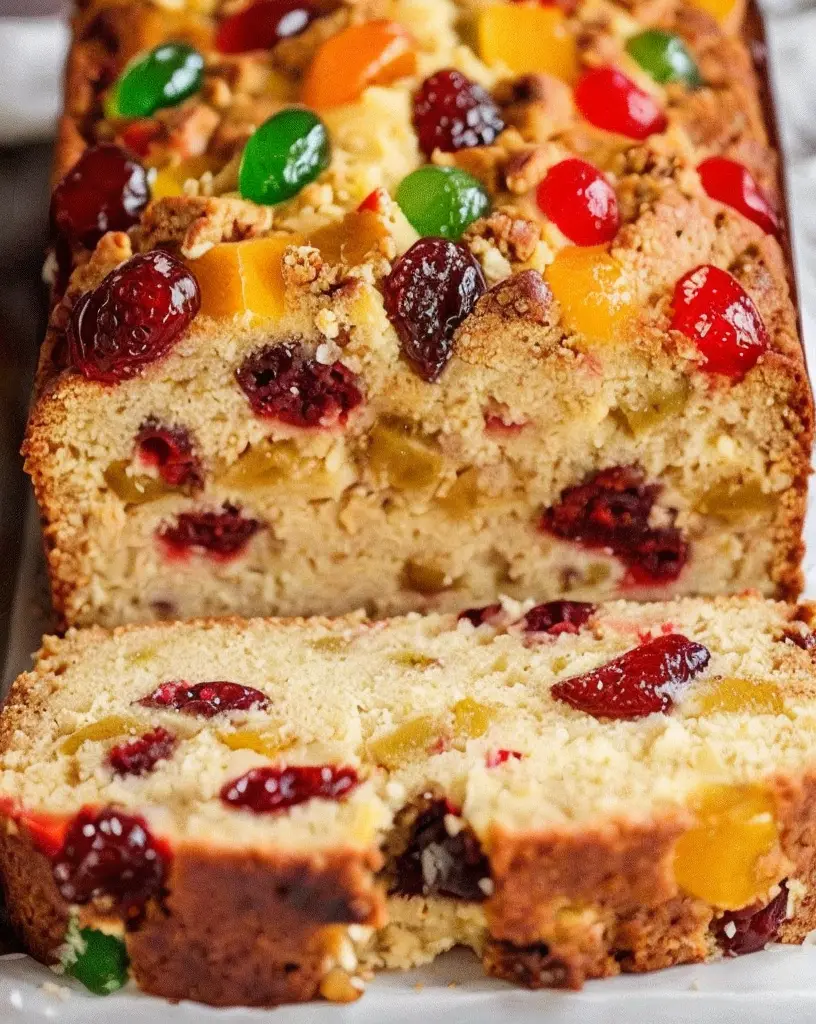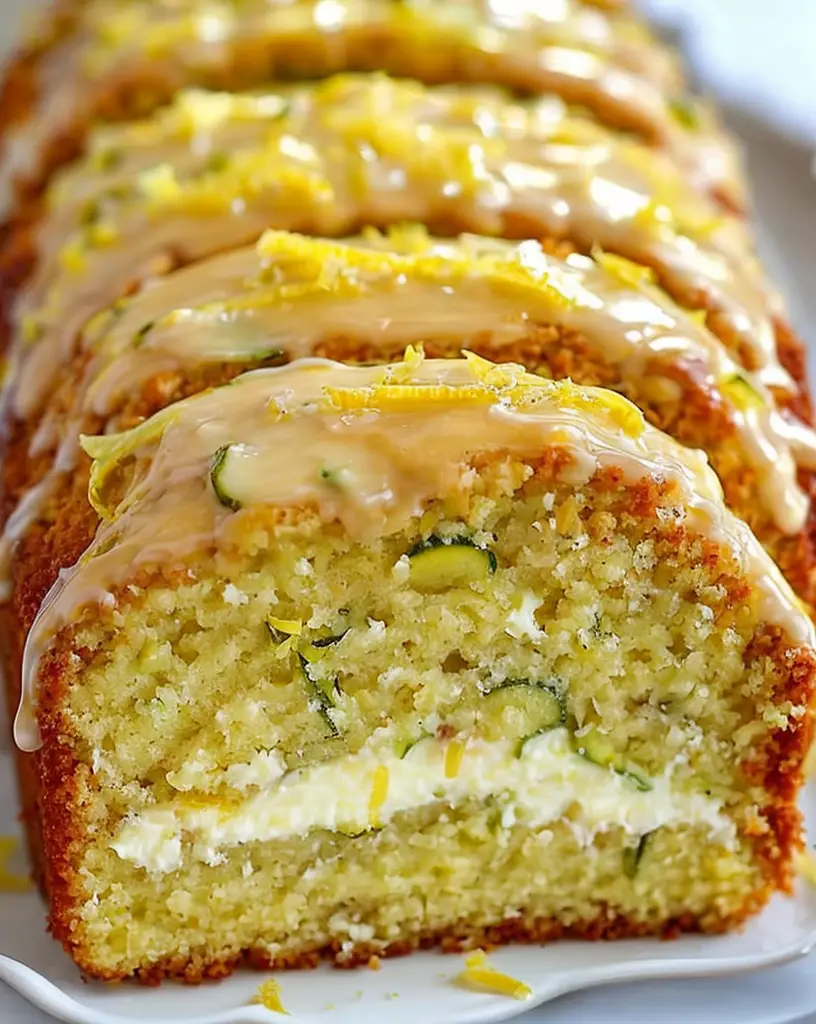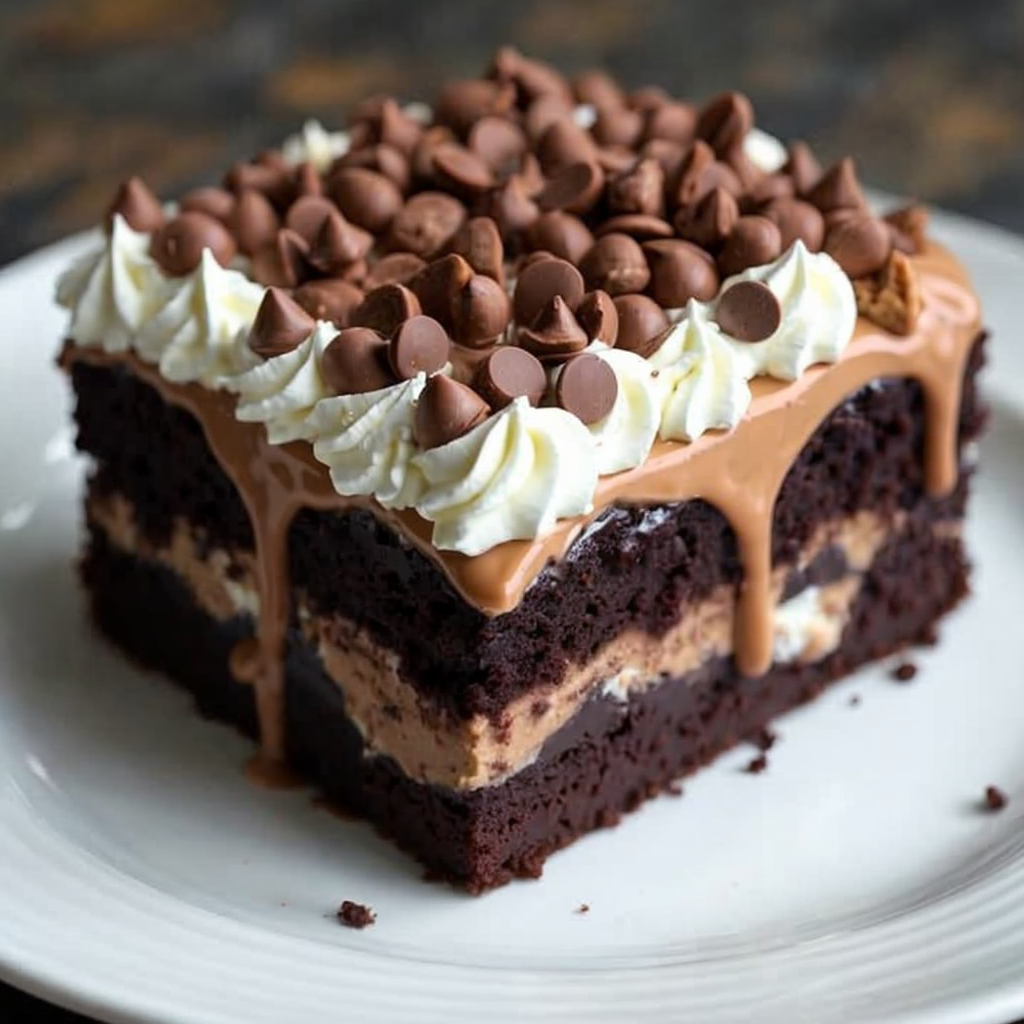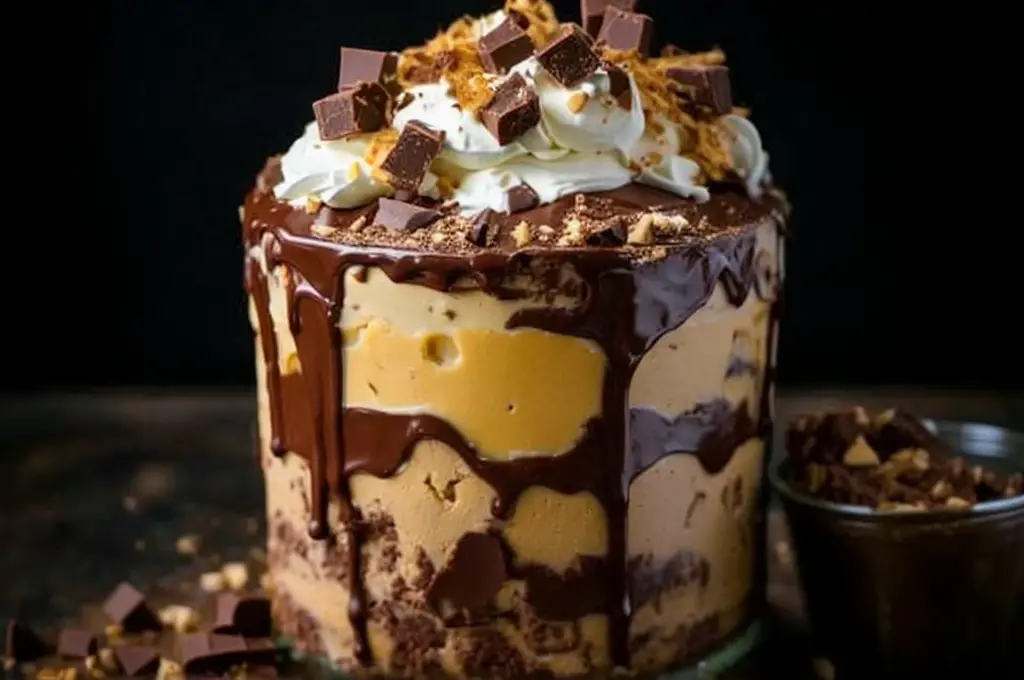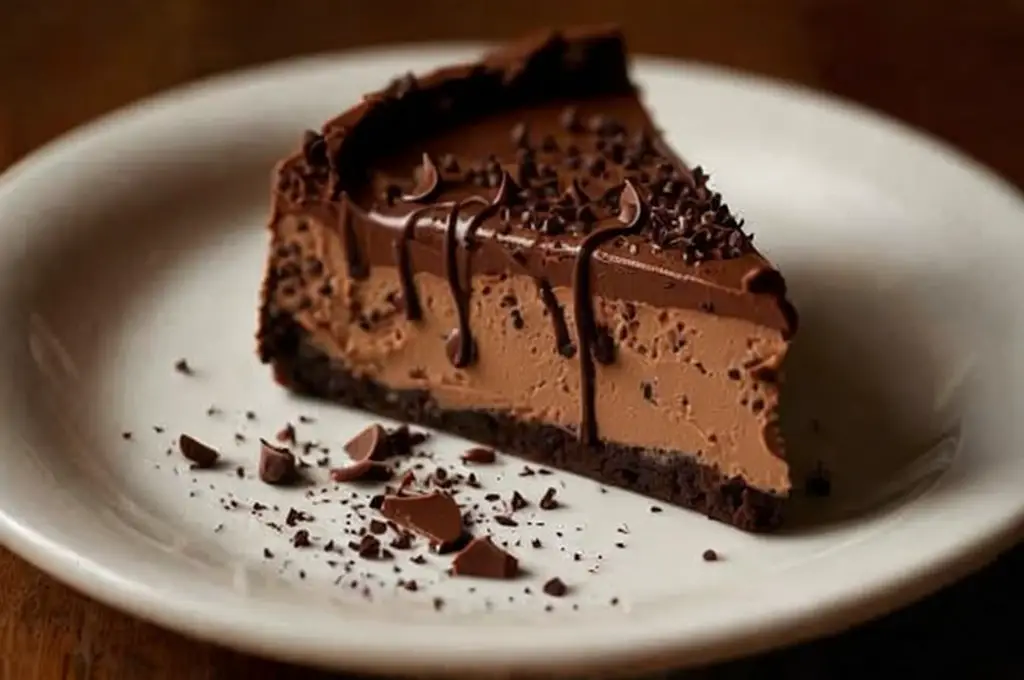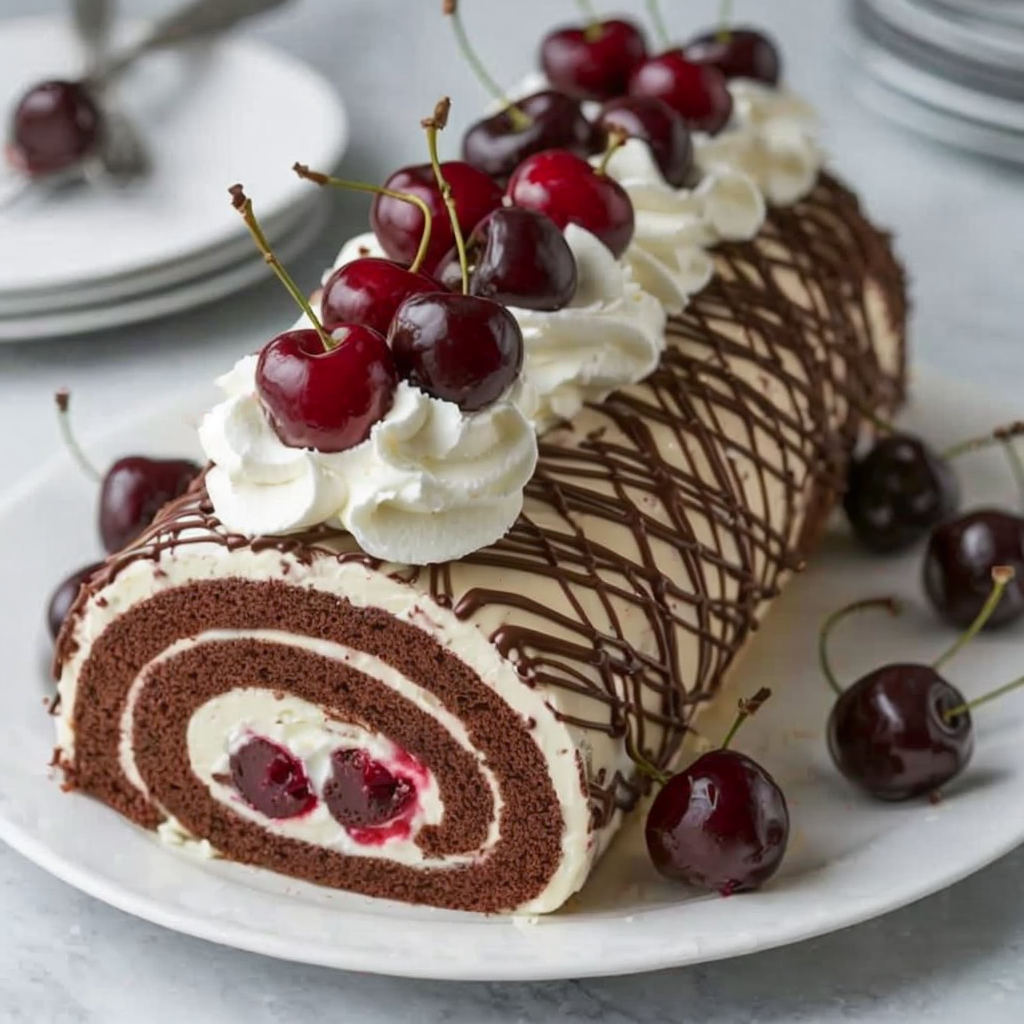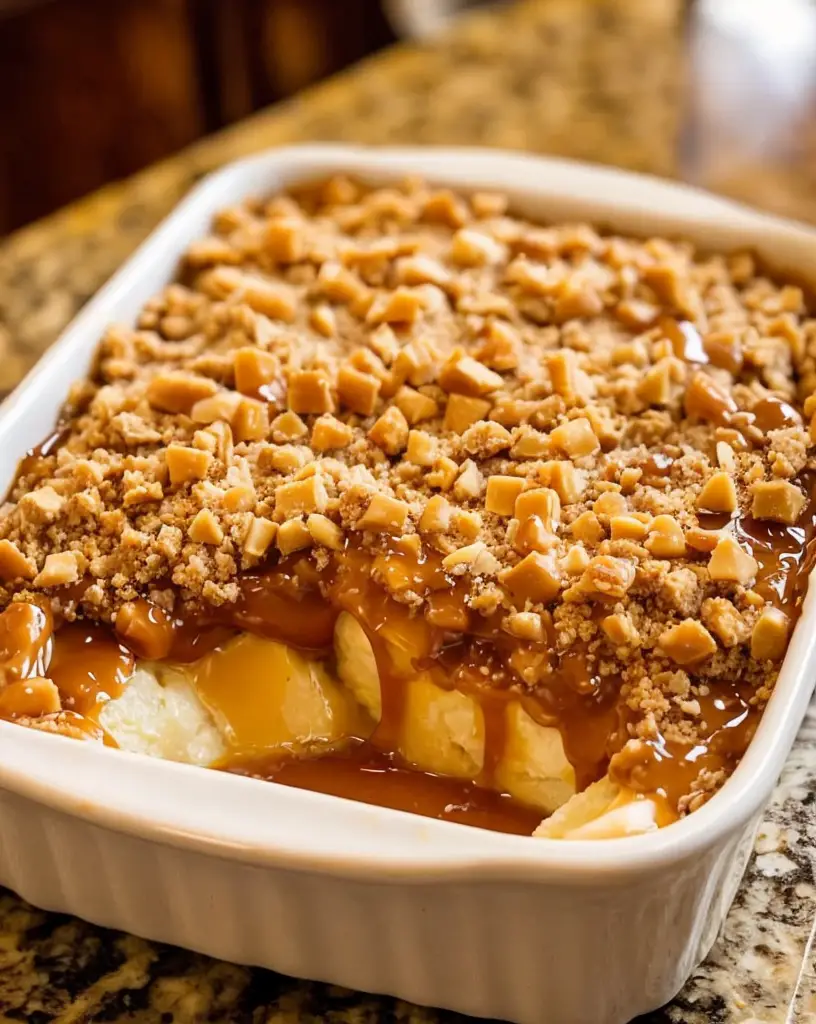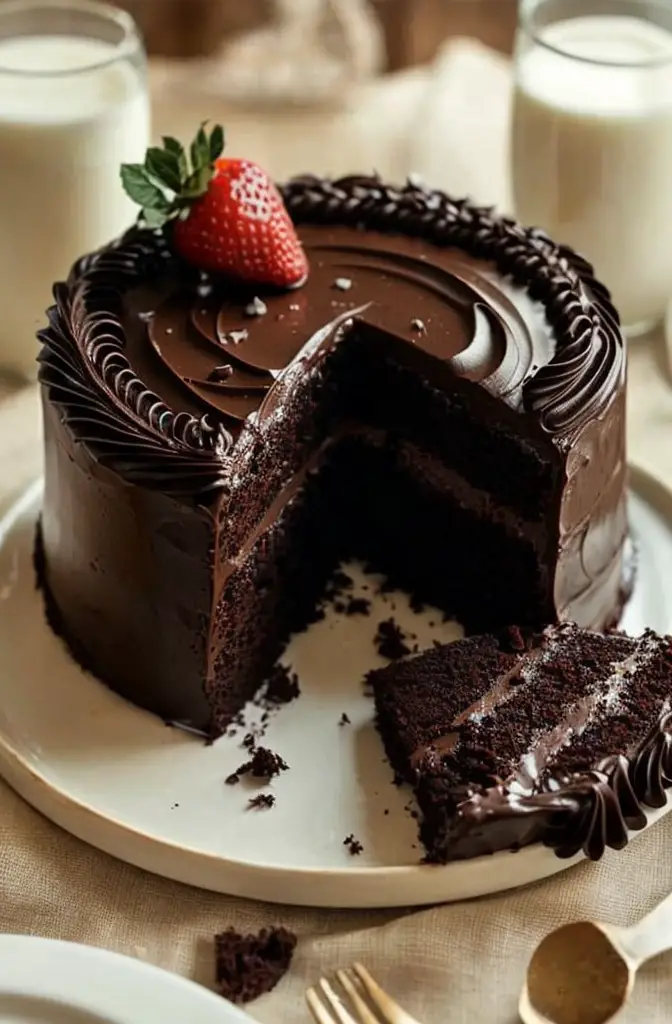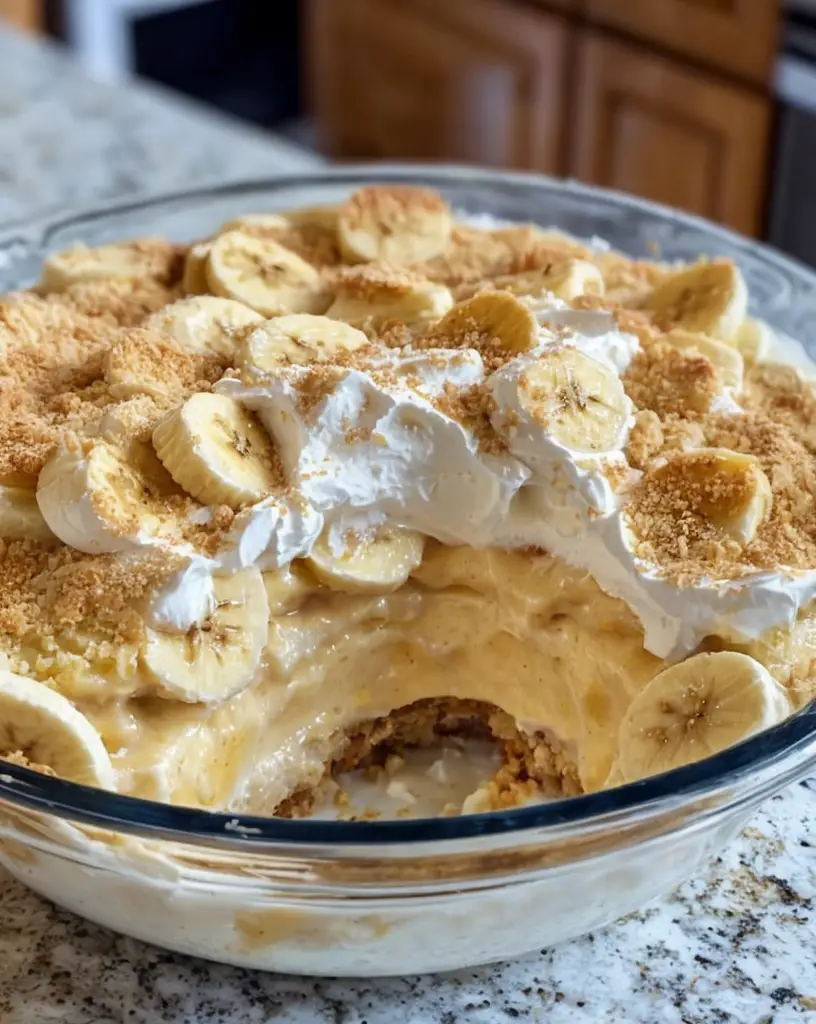Creating a traditional holiday fruit cake is more than just baking; it’s about building memories, laced with the warmth and love of festive gatherings. This moist, rich cake, filled with an array of fruits and nuts, is a beloved centerpiece of holiday celebrations around the world. Whether served at Christmas dinner or wrapped up as a delightful gift, this cake carries the essence of the holiday spirit in every slice.
The medley of flavors in a traditional holiday fruit cake is truly enchanting. From the sweetness of dried fruits like raisins and apricots to the warmth of spices such as cinnamon and nutmeg, each bite is a reminder of cherished holiday traditions. The aroma wafting from the oven as the cake bakes is enough to bring the whole family together, filling hearts and homes with excitement and cheer.
Quick Recipe Highlights
- Flavor Profile: The cake combines sweet and tangy dried fruits with the rich notes of spices, creating a symphony of flavors.
- Texture: With its moist crumb and chewy fruit pieces, the cake offers a delightful contrast that makes it addictive.
- Aroma: Aromatic spices like cinnamon, mixed with the sweetness of dried fruits create a nostalgic scent that is synonymous with the holiday season.
- Visual Appeal: The vibrant colors of the fruits against the brown background of the cake make for a beautiful holiday display.
- Skill Level Needed: While slightly complex, anyone can master this traditional recipe with careful attention and practice.
- Special Equipment: A sturdy mixing bowl and a loaf or bundt pan are essential for crafting this fruit cake.
Recipe Overview
- Difficulty Level: Moderate; this recipe involves multiple steps but is achievable with some baking experience.
- Category: Desserts; perfect for holiday gatherings and special occasions.
- Cuisine: Drawing from European culinary traditions, fruitcakes have been adored for centuries across various cultures.
- Cost: The ingredients may vary, but overall, it remains an economical choice for special occasions.
- Season: Best enjoyed during the holiday season when dried fruits are plentiful and flavors are intensified.
- Occasion: Ideal for Christmas, Thanksgiving, or any festive gathering that calls for a celebration.
Why You’ll Love This Recipe
This traditional holiday fruit cake brings a multitude of taste and texture experiences. It perfectly balances sweetness from dried fruits with hints of spice, creating a harmonious flavor journey in every bite. The cake’s moistness, combined with the chewy fruits and crunchy nuts, offers a delightful mouthfeel that makes it difficult to resist.
Preparing this fruit cake is not just about the end product; it’s an enjoyable and convenient process for every baker. The mixing and blending of ingredients can be a therapeutic experience, allowing time for relaxation and reflection. Plus, its long shelf life means you can enjoy it over several weeks, making it a worthy investment of your time.
Aside from its delightful taste, this cake also brings nutritional benefits. Dried fruits are rich in vitamins, minerals, and fiber while nuts contribute healthy fats and protein. It’s a dessert that offers not only sweetness but also a satisfying nutritional boost.
Sharing this traditional holiday cake at family gatherings or with friends elevates its value, fostering community and celebrating togetherness. It is a conversation starter and often leads to stories of family traditions and cherished memories.
Additionally, the cost-effectiveness of this recipe makes it accessible for everyone. With relatively inexpensive ingredients, it can be made in large batches, making it an excellent choice for holiday gifting or large family celebrations.
Historical Background and Cultural Significance
The origin of fruitcake can be traced back to ancient Rome, where it was made with barley, pomegranate seeds, nuts, and raisins. Over time, this simple creation evolved, incorporating honey and wine, eventually becoming the rich holiday treat we know today. As it traveled through Europe, each region developed its own variations, integrating local fruits and spirits.
Culturally, the fruitcake has significant importance, often symbolizing prosperity and celebration. Traditionally, fruitcakes were favored for weddings and special occasions, as they were believed to bring good fortune to the couple. This significance has made it a staple at holiday celebrations as well.
With time, the evolution of ingredients and preferences led to regional variations. In some cultures, spirits like rum or brandy are added to keep the cake moist, while others may use more fresh fruit. These variations reflect the local tastes and customs that have shaped fruitcake recipes worldwide.
Fruitcake’s cultural footprint is particularly strong in the UK and the US, where it is often associated with Christmas. This rich history serves to enhance the charm of hiding a slice of tradition in every bite, connecting us to our roots and the generations before us.
Ingredient Deep Dive
Dried Fruits
Dried fruits are the heart of any traditional fruitcake, contributing sweetness and texture. Historically, they were a method to preserve fruits for winter, making them an essential part of many cultures’ culinary traditions. Rich in vitamins and minerals, they offer a healthy alternative to processed sugars. When selecting dried fruits, look for those without added sugars or preservatives, which can detract from the cake’s flavor. Storing them in a cool, dark place extends their shelf life, while convenience allows for easy substitutions, should you prefer apricots or dates over the more traditional raisins and currants.
Nuts
Nuts add not only texture but also healthy fats and protein to the cake. Almonds, walnuts, and pecans are popular choices. Historically associated with good luck, nuts bring rich, nutty flavors that balance the sweetness of the fruits. When selecting nuts, opt for fresh, raw varieties for the best taste. Store nuts in an airtight container in the fridge or freezer to preserve their flavor and prevent rancidity. For those with nut allergies, seeds or additional dried fruits can serve as great alternatives.
Common Mistakes to Avoid
- Not soaking fruits: Failing to soak dried fruits can lead to a dry cake. Soak them in rum or juice to enhance moisture.
- Incorrect measuring: Baking is precise; always measure ingredients accurately to ensure the right consistency.
- Not preheating the oven: An unpreheated oven can skimp on the initial rise and create a dense cake.
- Overmixing the batter: Gently fold ingredients together to avoid activating gluten, which can make the cake tough.
- Using stale ingredients: Always check that your baking powder and spices are fresh for the best flavor.
- Ignoring storage conditions: Storing the cake in a warm area can cause spoilage; always keep it cool and dry.
- Skimping on flavor: Don’t be afraid to experiment with spices; a pinch of clove or cardamom can elevate your cake.
- Not letting the cake mature: For the best flavor, allow the fruitcake to sit for a few days before serving.
Essential Techniques
Soaking Fruits
Soaking the dried fruits before baking allows them to absorb moisture and enhances their flavor in the cake. This technique is crucial as it ensures the fruits become plump and flavorful, marrying beautifully with the batter during baking. To master this, soak fruits overnight or at least for a few hours in your choice of juice or alcohol.
Proper Mixing
How you mix your batter can profoundly affect the final outcome. Overmixing can lead to a dense texture, while undermixing can result in an uneven cake. Blend ingredients until just combined, ensuring you mix well but gently fold in the flour to keep the cake light and airy.
Pro Tips for Perfect Traditional Holiday Fruit Cake
1. Use high-quality dried fruits and nuts for a tastier cake.
2. Allow your fruitcake to mature for at least a week before serving; it enhances the flavors significantly.
3. Experiment with spices to create a unique flavor profile; just a touch of ground cardamom can add a delightful twist.
4. When baking, line your cake pan with parchment paper for easy removal and prevention of sticking.
5. Monitor the cake closely as it bakes to avoid overcooking; a toothpick inserted should come out clean.
6. If the top browns too quickly, cover it loosely with aluminum foil to ensure even baking.
7. Store your cake in an airtight container to maintain moisture and flavor over time.
8. Consider glazing the fruitcake with a light syrup to add shine before serving.
Variations and Adaptations
Exploring regional variations of traditional fruitcake can be a delightful culinary adventure. For instance, a Caribbean fruitcake often incorporates rum-soaked fruits and is richly spiced, giving it a unique tropical vibe. In contrast, a British Christmas cake tends to be denser, often topped with marzipan and royal icing, creating a beautiful presentation.
Seasonal adaptations can also enhance your loaf; try adding spiced apples for a fall twist or citrus zest in the summer for a refreshing note. For dietary modifications, consider making a gluten-free version by swapping all-purpose flour for a dedicated blend or almond flour, catering to those with specific dietary needs.
Flavor variations can be as simple as switching up fruits; consider using cherries or mangoes for a fruit-forward version. Texture modifications can include incorporating shredded coconut for added chewiness or using finely chopped candied ginger for spice.
Lastly, presentation alternatives can include dusting the cake with powdered sugar or serving it with a dollop of whipped cream for a festive touch.
Serving and Presentation Guide
Serving your traditional holiday fruit cake beautifully elevates any gathering. For plating, consider slicing the cake with a serrated knife to maintain its integrity. A simple garnishing option is to dust the top with powdered sugar or drizzle a light glaze that complements the fruit flavors.
Traditional accompaniments often include a side of whipped cream or a scoop of vanilla ice cream, enhancing the experience with a creamy contrast. Modern serving suggestions might involve pairing the cake with spiced tea or a rich hot chocolate, perfect for chilly gatherings.
When it comes to temperature, serving the cake at room temperature enhances its flavors all around. As for portion control, slice into generous pieces as this cake is rich and often enjoyed in moderation.
Wine and Beverage Pairing
Pairing beverages with your traditional holiday fruit cake can elevate the experience. A rich, fruity red wine like a port complements the cake’s sweetness beautifully. Alternatively, a light sparkling wine or champagne offers a refreshing contrast that can cleanse the palate.
For non-alcoholic alternatives, consider pairing with spiced apple cider or a warming herbal tea infused with cinnamon and ginger, enhancing the cake’s festive flavors. If opting for coffee or tea, remember to serve them at a warm temperature to match the richness of the fruit cake, making for a comforting and delightful treat.
Storage and Shelf Life
To ensure your holiday fruit cake remains delicious, proper storage is crucial. Wrap the cake tightly in plastic wrap and store it in an airtight container in a cool, dark place. This method can extend its shelf life up to several weeks.
For those wanting to enjoy it longer, consider freezing the cake. Slice it, wrap individual pieces tightly in plastic wrap, and store in a resealable freezer bag. You can enjoy it for several months; just remember to thaw it in the fridge overnight when you’re ready to indulge.
Signs of spoilage can include unusual odors or mold; if either is present, it’s time to discard the cake. Reheating slices in the oven briefly can revive their original texture and flavors beautifully.
Make Ahead Strategies
Preparing your traditional fruit cake in advance can help ease holiday stress. You can soak your dried fruits a few days before you bake, allowing them to absorb moisture and flavors. Additionally, mixing the cake batter can be done one day ahead; just refrigerate it and allow it to come to room temperature before baking.
If you’re short on time, consider baking the cake one or two weeks prior to the occasion. Store it according to proper guidelines to preserve freshness. For optimal taste, add any fresh topping or glaze just before serving to keep its integrity.
When reheating, ensure you do so gently at lower temperatures to maintain moisture. Fresh elements like whipped cream or zest can be added right before serving for an invigorating touch.
Scaling Instructions
Whether for an intimate gathering or a large party, knowing how to scale your traditional holiday cake is essential. If halving the recipe, divide all ingredients equally, and use a smaller baking pan for even cooking.
In case you want to double or triple the recipe, ensure that your mixing equipment is large enough to handle the increased volume. As with any baking, timing adjustments may be necessary; monitor your cake closely as larger quantities tend to take longer to bake through.
Also, storage considerations should be accounted for when scaling; larger portions may require more space in your refrigerator or pantry and may impact the serve-ready timeline.
Nutritional Deep Dive
Delving into the nutritional aspects of your traditional fruit cake reveals a balanced profile. The macros generally feature carbohydrates primarily from the flour and dried fruits, with modest contributions from healthy fats in nuts.
Micronutrient analysis shows an array of vitamins and minerals from both nuts and dried fruits, which can offer health benefits including improved digestion and energy boosts. Keeping portion analysis in mind is vital; moderation can provide an indulgent treat without straying from a balanced diet.
For those mindful of weight management, this cake can be enjoyed in smaller slices, allowing for a satisfying dessert experience while keeping calories in check.
Dietary Adaptations
For those needing gluten-free options, simply substitute traditional flour with almond flour or a gluten-free all-purpose blend, maintaining the rich texture while accommodating dietary needs.
Those on a dairy-free diet can create a vegan version by replacing eggs with flaxseed meal or applesauce. Adjust the liquid ratios to prevent the cake from drying out.
For a low-carb or keto approach, use almond flour and sugar alternatives like erythritol, maintaining sweetness without the carbs. Paleo adherents might appreciate using dried fruits and nuts that fit within their dietary framework.
Each of these adaptations ensures that everyone can enjoy a slice of holiday spirit, regardless of dietary restrictions.
Troubleshooting Guide
In baking, texture issues can arise if the cake is too dense. This often indicates an overmixed batter; gently fold ingredients together to avoid this. If the flavor balance seems off, consider adding a splash of citrus for brightness.
Temperature problems can occur if the oven isn’t properly calibrated; using an oven thermometer can aid in achieving the correct baking temperature. Ingredient substitutions may alter the outcome; for instance, using unsweetened applesauce instead of sugar can lead to moisture differences.
Timing concerns, such as underbaking, can be adjusted with an additional few minutes in the oven, ensuring the toothpick test yields clean results.
Recipe Success Stories
The community response to traditional holiday fruit cake recipes has been overwhelmingly positive. Many have shared personal stories about how making this cake has become a cherished family tradition, passed down through generations.
Successes vary from new bakers mastering the delicate art of fruitcake to seasoned chefs trying out innovative variations, celebrating how personal tweaks and modernization breathe new life into the classic recipe.
Readers have also suggested their favorite ingredient combinations, opening doors for creativity, while photography tips encourage showcasing the cake’s vibrancy on social media platforms, creating a wave of interest among aspiring bakers.
The adaptability of this recipe means that everyone can find their own success story, adding their unique twist on an age-old classic.
Frequently Asked Questions
Yes, fruit cakes can be made well in advance. In fact, they often taste better when allowed to sit for a week or two, as the flavors meld together beautifully.
2. How do I store my fruitcake?
Wrap your fruitcake tightly in plastic wrap and store it in an airtight container. Store it in a cool, dry place to maintain freshness.
3. Can I freeze fruitcake?
Yes, fruitcake freezes well. Slice it, wrap it tightly in plastic wrap, and store it in a freezer-safe bag. It can last for several months in the freezer.
4. What liquors pair well with fruitcake?
Dark rums, brandies, and whiskey pair wonderfully with fruitcake, adding depth and complexity to its flavors.
5. Can I use fresh fruits instead of dried fruits?
Fresh fruits are not recommended as they add excess moisture, which can lead to a soggy cake. Stick to dried fruits for best results.
6. Is it normal for fruitcake to be heavy?
Yes, fruitcakes are denser due to the rich ingredients packed into them, so don’t expect a light cake like a sponge.
7. Can I add different spices?
Absolutely! This recipe is quite versatile; feel free to experiment with spices like nutmeg, cardamom, or even ginger for added warmth.
8. Should I use salted or unsalted nuts?
Unsalted nuts are recommended to control the saltiness of the cake; however, if you prefer slightly salted, it can add an interesting depth of flavor.
9. How can I make my fruitcake more visually appealing?
Consider decorating the top with additional dried fruits, nuts, or even a light glaze for shine. A dusting of powdered sugar can also be festive!
10. Can I make a vegan fruitcake?
Yes, you can substitute eggs with flaxseed meal or applesauce, and be sure to use plant-based ingredients for the best results.
Additional Resources
If you loved this traditional holiday fruit cake, you might enjoy exploring related recipes that embody the spirit of the season. Consider trying carrot cake or pumpkin bread, both of which feature similar flavors and textures.
For more techniques, check out guides on baking methods or the secrets of ingredient substitutions. Ingredient information, especially on dried fruits and nuts, can help refine your next fruitcake iteration, while recommendations for kitchen equipment can enhance your baking experience.
Lastly, keeping track of seasonal variations can inspire your future baking endeavors, encouraging you to explore new flavors and experiences together with friends and family.
Join the Conversation
We invite you to share your experiences with our traditional holiday fruit cake! Join us on social media for vibrant photography, enticing flavors, and delightful feedback from fellow bakers. Your reviews and suggestions can guide others, creating a collaborative atmosphere where culinary secrets can be exchanged.
Your unique twists and variations on this classic recipe also have the potential to inspire those around you. We encourage community engagement that brings bakeries together in sharing their passion for cooking. Let’s celebrate the joy of baking this holiday season, creating lasting memories one slice at a time!
The Recipe
Traditional Holiday Fruit Cake
Serves: 12
Prep Time: 20 mins
Cook Time: 120 mins
Total Time: 140 mins
Kitchen Equipment Needed
- Mixing bowl
- Loaf or bundt pan
- Serrated knife for slicing
- Measuring cups and spoons
- Whisk
Ingredients
- 2 cups mixed dried fruits
- 1 cup chopped nuts
- 1 ½ cups all-purpose flour
- 1 cup sugar
- ½ cup unsalted butter, softened
- 3 large eggs
- 1 teaspoon baking powder
- 1 teaspoon cinnamon
- ½ teaspoon nutmeg
- ½ teaspoon salt
- ¼ cup rum (optional)
Directions
- Preheat the oven to 325°F (165°C) and grease your baking pan.
- In a mixing bowl, soak the dried fruits in rum (if using) for about an hour.
- In another bowl, cream together the butter and sugar until light and fluffy.
- Add the eggs, one at a time, to the butter mixture, mixing well after each addition.
- In a separate bowl, whisk together the flour, baking powder, spices, and salt.
- Gradually add the dry ingredients to the wet mixture, folding it in gently.
- Fold in the soaked fruits and nuts until evenly distributed.
- Pour the batter into the prepared pan and smooth the top.
- Bake for about 120 minutes, or until a toothpick comes out clean.
- Allow the cake to cool in the pan for 10 minutes before transferring it to a wire rack to cool completely.
Recipe Notes
- For additional moisture, you can brush the cake with more rum or syrup as it cools.
- Store wrapped in plastic to maintain freshness for up to several weeks; it only gets better with time!
- For vegan options, substitute eggs with flaxseed meal or applesauce, optimizing for moisture content.
